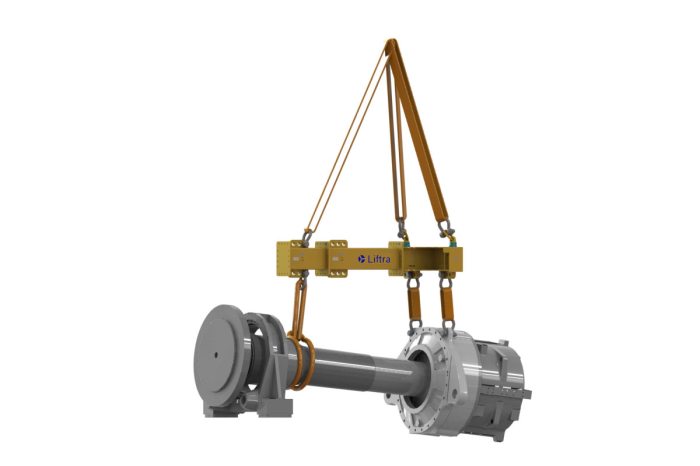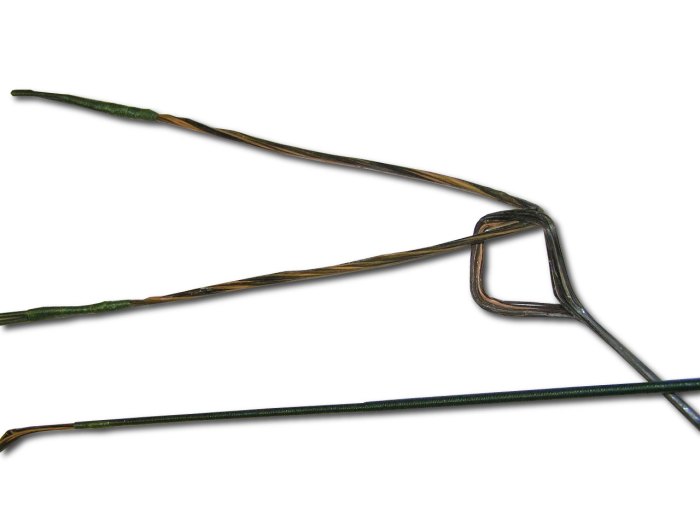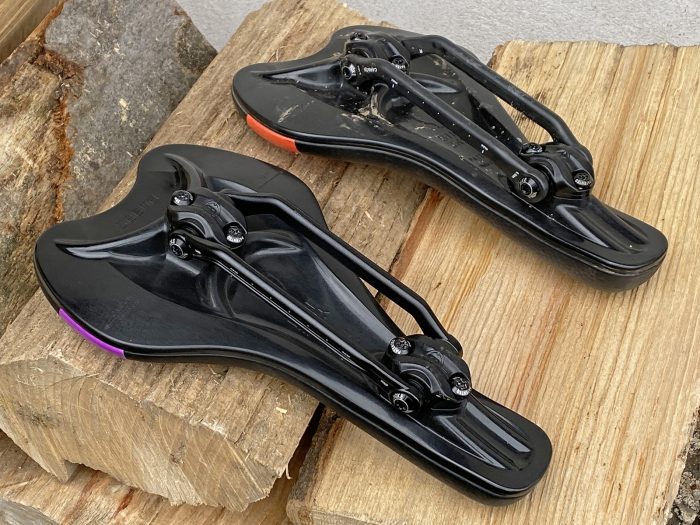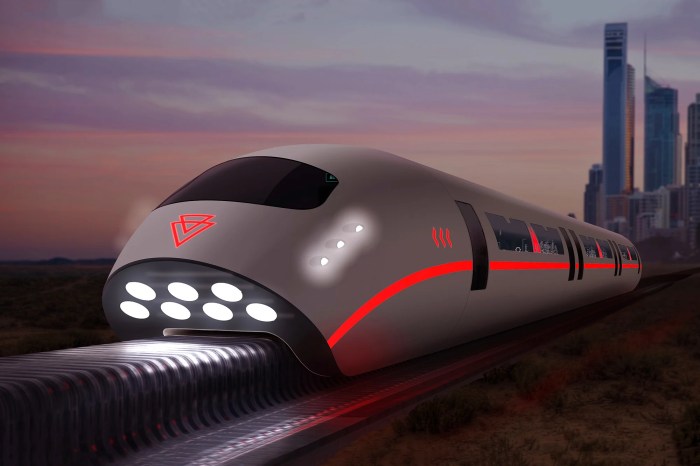Floating yoke for train cars – Floating yokes, a cornerstone of modern rail technology, are revolutionizing train car design. Dive into the fascinating world of floating yokes, where innovation meets engineering excellence.
These devices, strategically positioned between train cars, play a pivotal role in enhancing ride quality, reducing maintenance costs, and improving overall rail operations.
Floating Yoke Design

The floating yoke is a crucial component of train cars, designed to provide a stable and efficient connection between the car body and the bogies (wheel assemblies).
The concept of a floating yoke is based on the principle of allowing the bogies to move independently of the car body. This independent movement is facilitated by a pivot point that connects the yoke to the car body, allowing the bogies to rotate and adjust to variations in track conditions and curves.
The floating yoke for train cars is a remarkable innovation, enabling trains to navigate curves smoothly. It’s akin to the vibrant flavors of frutas de américa del sur , each one bursting with a unique sweetness that complements the others.
Just as these fruits create a harmonious blend, the floating yoke allows trains to glide effortlessly around curves, enhancing both efficiency and passenger comfort.
Advantages of Using a Floating Yoke
- Enhanced Stability:The floating yoke design provides improved stability to train cars, especially when traversing curves or uneven tracks. The independent movement of the bogies allows the car body to remain level, reducing lateral forces and improving passenger comfort.
- Reduced Wear and Tear:By allowing the bogies to move independently, the floating yoke reduces stress and wear on the car body and bogies. This results in increased component lifespan and reduced maintenance costs.
- Improved Traction:The independent movement of the bogies enables optimal contact between the wheels and the tracks, resulting in improved traction and reduced wheel slip. This is particularly beneficial in slippery conditions or on steep gradients.
Challenges Associated with Designing a Floating Yoke
- Balancing Stability and Flexibility:Designing a floating yoke requires careful consideration to achieve a balance between stability and flexibility. The yoke must provide sufficient support to maintain car body stability while allowing enough movement for the bogies to adapt to track conditions.
- Load Distribution:The floating yoke must be designed to distribute loads effectively between the car body and the bogies. Improper load distribution can lead to uneven wear and reduced component lifespan.
- Maintenance and Inspection:The floating yoke requires regular maintenance and inspection to ensure proper functioning and prevent potential failures. This can add to the overall maintenance costs of the train.
Yoke Suspension Systems
Yoke suspension systems are crucial components of train cars, ensuring smooth and stable rides for passengers and cargo. They connect the car body to the wheelset, providing flexibility and absorbing vibrations and shocks.There are various types of yoke suspension systems used in train cars, each with its advantages and disadvantages:
Simple Yoke Suspension
The simplest form of yoke suspension, it consists of a rigid yoke that connects the car body to the wheelset. It offers good stability and load-bearing capacity but limited flexibility.
Swing-Link Yoke Suspension
This suspension system introduces a swing link between the yoke and the car body, allowing for some lateral movement. It provides improved flexibility and stability compared to the simple yoke suspension.
Pendulum Yoke Suspension
Pendulum yoke suspension incorporates a pendulum mechanism that allows the car body to tilt slightly when cornering. This reduces lateral forces on the wheels, improving ride quality and stability.
Floating Yoke Suspension
The floating yoke suspension, discussed in the previous section, provides exceptional flexibility and vibration absorption. It consists of a floating yoke that is not rigidly connected to the car body, allowing it to move independently.The choice of yoke suspension system depends on the specific requirements of the train car, including speed, load capacity, and ride quality.
Yoke Materials and Manufacturing

Floating yokes are typically constructed using high-strength steel alloys to withstand the demanding operating conditions of railway environments. These alloys possess exceptional tensile strength, wear resistance, and fatigue resistance, ensuring the structural integrity of the yoke during operation.
Manufacturing Processes
The manufacturing of floating yokes involves several key processes:
- Forging:The initial step involves forging the yoke from a solid steel block using specialized forging equipment. This process shapes the yoke into its desired form while enhancing its strength and durability.
- Heat Treatment:After forging, the yoke undergoes heat treatment processes, such as quenching and tempering, to further improve its mechanical properties and enhance its resistance to wear and fatigue.
- Machining:The yoke is then subjected to precision machining operations to achieve the required dimensional accuracy and surface finish. This process ensures proper fit and function within the suspension system.
- Surface Treatment:To protect the yoke from corrosion and environmental factors, a protective coating, such as painting or galvanizing, is applied to the finished product.
Quality Control Measures
Rigorous quality control measures are implemented throughout the manufacturing process to ensure the integrity and reliability of floating yokes. These measures include:
- Material Testing:The steel alloys used in yoke production undergo rigorous testing to verify their mechanical properties and composition.
- Dimensional Inspection:Dimensional inspections are performed at various stages of production to ensure compliance with design specifications.
- Non-Destructive Testing:Non-destructive testing methods, such as ultrasonic and magnetic particle testing, are employed to detect any internal defects or discontinuities in the yoke.
- Performance Testing:Completed yokes undergo performance testing to assess their load-bearing capacity, fatigue resistance, and overall functionality.
Yoke Testing and Validation

Ensuring the reliability of floating yokes is crucial for the safe and efficient operation of trains. This involves rigorous testing and validation procedures to evaluate their performance under various operating conditions.
Testing Procedures
- Static Load Testing:Assesses the yoke’s ability to withstand static loads, such as the weight of the car body and payload.
- Dynamic Load Testing:Evaluates the yoke’s response to dynamic loads, such as those encountered during train acceleration, braking, and track irregularities.
- Fatigue Testing:Determines the yoke’s resistance to repeated loading and unloading cycles, simulating long-term service conditions.
- Environmental Testing:Exposes the yoke to extreme temperatures, humidity, and corrosive environments to assess its durability.
Importance of Testing and Validation
Testing and validation play a vital role in ensuring the reliability of floating yokes by:
- Verifying the yoke’s design specifications and performance requirements.
- Identifying potential weaknesses or areas for improvement.
- Providing data for continuous improvement and optimization of yoke designs.
- Ensuring compliance with industry standards and regulations.
Industry Standards and Regulations
The testing and validation of floating yokes are governed by industry standards and regulations, such as:
- American Railway Engineering and Maintenance-of-Way Association (AREMA)
- International Union of Railways (UIC)
- European Committee for Standardization (CEN)
These standards provide guidelines for testing procedures, performance criteria, and quality control measures to ensure the safety and reliability of floating yokes in railway applications.
Yoke Applications and Case Studies: Floating Yoke For Train Cars
Floating yokes have found widespread applications in the rail industry, enhancing the performance and safety of rail vehicles.
Successful implementations of floating yokes have been reported in various case studies, demonstrating their effectiveness in addressing specific challenges and improving operational efficiency.
Case Study: High-Speed Rail Application, Floating yoke for train cars
- A leading high-speed rail operator implemented floating yokes on its fleet to mitigate the effects of track irregularities and improve ride quality for passengers.
- The yokes effectively absorbed lateral forces, reducing lateral acceleration and vibration levels, resulting in a smoother and more comfortable ride experience.
Case Study: Heavy Haul Application
- A heavy haul railway deployed floating yokes to enhance the stability and safety of its long and heavy trains.
- The yokes allowed for better load distribution and reduced the risk of derailment by preventing excessive lateral displacement of the bogies.
Lessons Learned
Case studies have highlighted the following lessons learned:
- Floating yokes can significantly improve ride quality and passenger comfort in high-speed applications.
- They enhance stability and safety in heavy haul operations, reducing the risk of derailment.
- Proper design and maintenance of floating yokes are crucial for optimal performance and longevity.
Future Developments in Floating Yoke Technology

Floating yoke technology continues to evolve, driven by advancements in materials, manufacturing techniques, and engineering design. As the industry embraces new technologies and explores innovative applications, we can expect to see further advancements in floating yoke design and functionality.
Emerging Trends in Floating Yoke Technology
One emerging trend is the use of lightweight and high-strength materials, such as carbon fiber composites and advanced alloys. These materials offer improved strength-to-weight ratios, allowing for the design of lighter and more efficient floating yokes. Additionally, advancements in manufacturing techniques, such as additive manufacturing (3D printing), enable the production of complex and customized yoke designs with greater precision and cost-effectiveness.
Potential Applications of Floating Yokes
Floating yokes are finding new and innovative applications beyond traditional rail transportation. For example, they are being explored for use in heavy-duty vehicles, such as mining trucks and construction equipment, where they can improve load stability and reduce wear and tear on the vehicle’s suspension system.
Additionally, floating yokes are being considered for use in renewable energy systems, such as wind turbines, where they can help to reduce vibration and improve energy efficiency.
Challenges and Opportunities for Future Advancements
While floating yoke technology has made significant progress, there are still challenges and opportunities for future advancements. One challenge is to further improve the durability and reliability of floating yokes, especially in harsh operating environments. Another challenge is to develop more efficient and cost-effective manufacturing processes to make floating yokes more accessible and affordable.
However, these challenges also present opportunities for innovation and collaboration, as engineers and researchers work together to push the boundaries of floating yoke technology.
Detailed FAQs
What is a floating yoke?
A floating yoke is a device that connects adjacent train cars, allowing them to move independently while maintaining a secure connection.
What are the benefits of using floating yokes?
Floating yokes reduce wear and tear on train cars, improve ride quality, and lower maintenance costs.
What are the different types of floating yoke suspension systems?
There are various suspension systems for floating yokes, each with its own advantages and disadvantages, such as the center pivot system and the side bearer system.
How are floating yokes tested and validated?
Floating yokes undergo rigorous testing procedures to ensure their performance and reliability, including load testing and dynamic simulations.